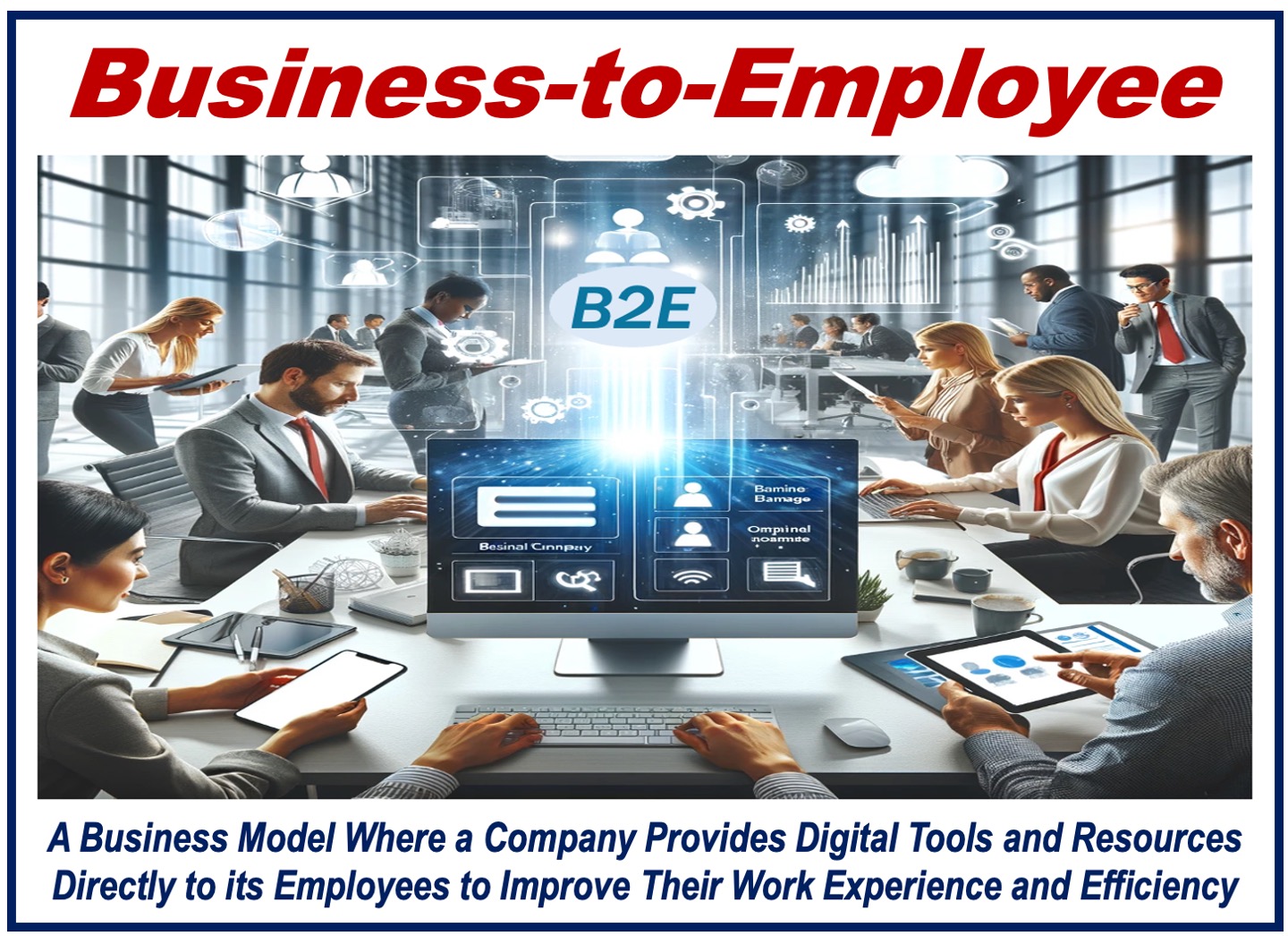Business-to-Employee, which is also known as B2E, is a strategy that focuses on how companies, governments, and other employers interact with their employees. The aim is to improve their work experience through various services and tools.
The B2E approach is essential for businesses that are looking to streamline their operations and boost employee satisfaction, efficiency, and productivity.
B2E – digital tools and platforms
Business-to-Employee (B2E) systems encompass a range of digital resources designed to assist employees in their daily work and enhance their work experience. Here are some examples of such tools:
- Online Training Platforms: For skill development and career advancement.
- Employee Self-Service Portals: Where employees update personal data and manage leave.
- Performance Management Systems: To set and review performance goals.
- Internal Communication Tools: For easy team messaging and collaboration.
- Benefits Administration Platforms: To select and manage employee benefits.
- Expense Management Systems: For tracking and reimbursing work-related expenses.
- Employee Feedback Tools: To gather and act on employee opinions.
- Recognition Programs: For acknowledging employee achievements.
- Scheduling Software: To manage work shifts and assignments.
- Health and Wellness Portals: Offering health tips and fitness tracking.
- Learning Management Systems (LMS): Providing educational content for development.
- Workforce Analytics Tools: For data-driven workforce management.
- Safety and Compliance Training: For industry-specific safety standards.
- Collaborative Work Management Tools: To streamline project management across teams.

B2E benefits
Implementing a B2E model offers many benefits. It can lead to greater employee satisfaction by making work-related processes simpler and more efficient.
For example, employees can save a lot of time searching for information if there is a well-designed internal portal. They can then spend more time focusing on their core responsibilities.
Employees can feel more engaged and valued if they have direct access to training and development resources, which in turn can help reduce turnover rates. The term “turnover rates,” in this context, refers to the rate at which employees leave a company and are replaced by new employees.
B2E also emphasizes personalization, so that employees can access tailored information and tools that directly support their work.
Conclusion
B2E is about creating a supportive digital environment for employees. With this type of model, companies can enhance operational efficiency, improve employee satisfaction, help foster a positive workplace culture, and reduce turnover rates.
B2E not only benefits employees, companies tend to operate more successfully in today’s fiercely competitive marketplace if their workforce is motivated and efficient.
